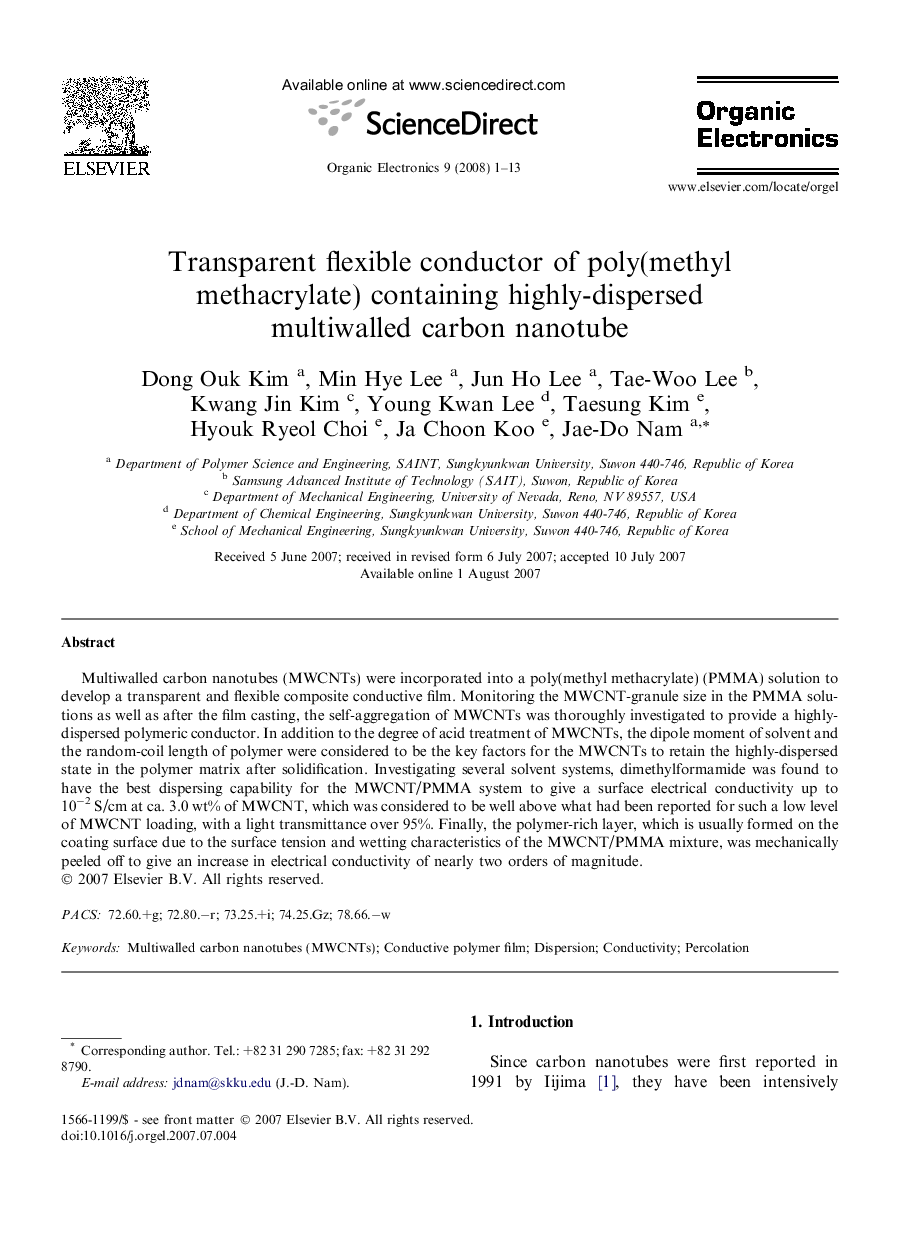| Article ID | Journal | Published Year | Pages | File Type |
|---|---|---|---|---|
| 1268535 | Organic Electronics | 2008 | 13 Pages |
Multiwalled carbon nanotubes (MWCNTs) were incorporated into a poly(methyl methacrylate) (PMMA) solution to develop a transparent and flexible composite conductive film. Monitoring the MWCNT-granule size in the PMMA solutions as well as after the film casting, the self-aggregation of MWCNTs was thoroughly investigated to provide a highly-dispersed polymeric conductor. In addition to the degree of acid treatment of MWCNTs, the dipole moment of solvent and the random-coil length of polymer were considered to be the key factors for the MWCNTs to retain the highly-dispersed state in the polymer matrix after solidification. Investigating several solvent systems, dimethylformamide was found to have the best dispersing capability for the MWCNT/PMMA system to give a surface electrical conductivity up to 10−2 S/cm at ca. 3.0 wt% of MWCNT, which was considered to be well above what had been reported for such a low level of MWCNT loading, with a light transmittance over 95%. Finally, the polymer-rich layer, which is usually formed on the coating surface due to the surface tension and wetting characteristics of the MWCNT/PMMA mixture, was mechanically peeled off to give an increase in electrical conductivity of nearly two orders of magnitude.
